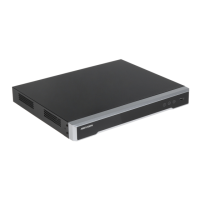Do you have a question about the HIKVISION iVMS-2000 and is the answer not in the manual?
| Recording Resolution | 1080p/720p |
|---|---|
| Operating System | Embedded Linux |
| Remote Access | Yes (via iVMS-4200) |
| Network Interface | 10/100/1000 Mbps Ethernet |
| Compression Format | H.264/H.265 |
| Power Supply | 12V DC |
Describes an example application scenario of iVMS-2000.
Lists the various features supported by the iVMS-2000 software.
Provides step-by-step instructions for installing the iVMS-2000 software.
Details the steps required to uninstall the iVMS-2000 software.
Explains how to launch and log into the iVMS-2000 application.
Details the System, View, Tools, Application, and Help menus.
Guides on viewing live video from connected cameras.
Describes previewing cameras organized into groups.
Details the toolbar functions for live preview windows.
Describes main console control buttons affecting all live preview windows.
Interface for controlling PTZ (Pan, Tilt, Zoom) cameras.
Adjusts video settings like brightness, contrast, saturation, and hue.
Manually triggers alarms or controls alarm output devices.
Displays and manages system alarm messages.
Allows previewing on secondary displays if available.
Finds recorded video based on specific dates and times.
Plays back multiple recorded videos simultaneously.
Allows creating and playing back short video segments.
Controls playback functions within the playback window.
Visual timeline for navigating recorded video playback.
Process for backing up recorded video data.
Searches playback video based on motion detection regions.
Divides and plays back single-channel records in multiple sections.
Plays back recorded video clips previously created.
Reviews POS transaction information and associated video.
Reviews recorded video associated with alarm logs.
Tool for viewing and editing captured images.
Describes how to add, edit, and manage maps and elements.
Covers adding, deleting, and modifying map files.
Manages interactive points on the map linked to cameras.
Creates shortcuts to link different maps together.
Adds points on the map associated with alarm inputs.
Details how to navigate and zoom within map previews.
Configures general system parameters like log keeping and snapshot paths.
Configures network parameters for server and client connections.
Manages camera inputs, parameters, and registration.
Organizes cameras into groups for preview and auto-switching.
Configures recording schedules for cameras.
Configures actions to be taken when an alarm event occurs.
Configures peripheral devices like serial ports and alarm boxes.
Manages user accounts, passwords, and privileges.
Configures email, alarm audio, and other settings.
Defines technical terms and acronyms used in the manual.











